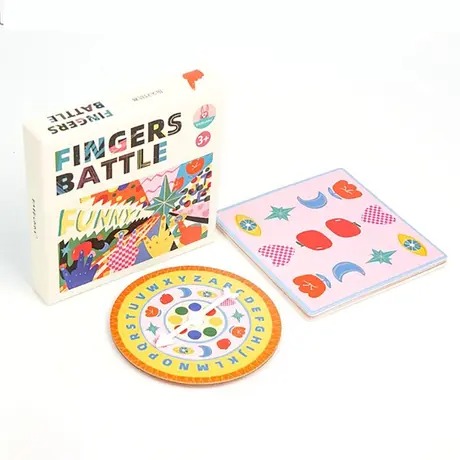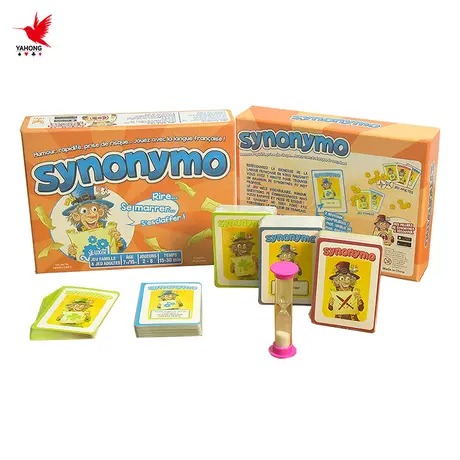Introduction
Developing a board game is a journey of creativity, iteration, and strategic design. It involves blending mechanics, theme, art, playtesting, manufacturing, and player experience into a cohesive whole. In this article, we dissect how to develop a board game in a methodical, actionable way. We also highlight the role of Board Game Customization as a powerful lever—customizing components, rules, and player options to create a unique, engaging product that stands out in a crowded market.
The reader will be guided from concept toward a publishable prototype. Every section addresses real challenges: narrowing scope, balancing complexity, sourcing components, and fine-tuning player engagement. Wherever it fits naturally and supportively, “Board Game Customization” is referenced—not as a gimmick, but as a strategic design tool.
Define the Core Vision — Theme, Mechanics, and Scope
Every successful board game begins with a clear vision. You must decide what the game is about, how it plays, and how ambitious it will be (in components, rule depth, and scale).
Clarify the Theme and Emotional Hook
Pick a compelling theme—fantasy, space trade, cooperative survival, historical reenactment—that resonates with your target audience. The emotional hook is what players feel while playing: tension, exploration, negotiation, or discovery. The theme and the hook shape many subsequent choices, especially in Board Game Customization: customizing art, tokens, and scenarios to align with the emotional arc.
Choose Core Mechanics That Support the Theme
List possible mechanical building blocks (deck-building, worker placement, area control, dice drafting, tile laying). Choose one or two core mechanics, not ten. Map out a rough flow: player turns, actions, resource cycles, win condition. Resist scope creep.
Bound the Scope and Component Complexity
Decide how many players, expected playtime, component count (cards, tokens, boards). Early on, choose a “minimum viable version” — you don’t need hundreds of unique cards at first. You can later expand via Board Game Customization—adding variants, expansions, module packs—but the base game must be lean and playable.
This clarity at the start prevents wasted time on excessive complexity.

Prototype Quickly and Iteratively
Once your vision is clear, build a playable prototype as soon as possible. This section focuses on rapid prototyping, iteration, and leveraging customizable elements.
Use Cheap Materials for Early Testing
Use index cards, stickers, tokens, bits, and printouts. Build a rudimentary board with paper and scissors. The goal is functional, not pretty. This allows you to iterate cheaply.
Integrate Board Game Customization Early
From the first prototype, allow for modular rule variants or component swaps. For instance:
| Variant Module | Purpose / Test Focus | Notes |
|---|---|---|
| Alternate starting resources | Test balance | Keeps core rules the same |
| Optional power cards | Add asymmetry | See player preferences |
| Scenario tiles | Environmental change | Adds replay variety |
By weaving in customization from the start, you can test which variants players prefer. The prototype becomes more flexible rather than fixed.
Playtest Fast, Playtest Often
Schedule internal and external playtests. After each playtest, gather feedback on pacing, decision-making, length, boredom points, and clarity. Fix glaring problems before adding more content. Each iteration should be significantly better—or you roll back.
Balance Mechanics, Pacing, and Player Experience
Balancing is one of the hardest parts of development. Even a brilliant theme or high customization won’t save a game that feels unfair or slow.
Quantitative vs. Qualitative Balancing
Quantitative balancing involves resources, probabilities, point output. Use spreadsheets to model outcomes (e.g., expected gain from each action).
Qualitative balancing covers pacing, fun curves, tension moments, downtime, and emotional flow. You can’t fully model that—you must feel it via playtests.
Using Board Game Customization for Balance Tuning
Offering adjustable modules or customization options can allow you to tune balance dynamically. For example:
Optional bonuses or handicaps for new players
Alternate cost curves for certain actions
Tiered rulesets: “light,” “standard,” “expert”
This gives you room to adjust difficulty and complexity without rewriting the core rules.
Mapping Pacing and Tension
Plot a “game curve” — a timeline indicating when tension should rise, peaks, and resolution. Ensure moments of decision, turning point, risk, and reward. Use pacing breaks or recovery phases so players don’t burn out.
You can track pacing with a chart like:
| Turn / Phase | Expected Player Decisions | Tension / Risk | Reward / Payoff |
|---|---|---|---|
| Setup / early | low-impact choices | low | setup returns |
| Midgame | resource allocation, conflict | high | moderate rewards |
| Late game | decision trade-offs | highest | endgame scoring |
If the custom modules you offered add too much downtime or overcomplicate midgame, you may need to limit or redesign them.
Design Components, Graphics, and Customization Options
A board game lives in its components—board, cards, tokens, art, user interface. Here, Board Game Customization shines because the tactile, visual, and functional customization elements can elevate player investment.
Token / Piece Customization
Consider:
Custom miniatures vs. standees vs. punchboard tokens
Player color sets
Special markers or overlays
Offering visual or cosmetic customization (alternate token styles, custom artwork for expansion components) can boost appeal without altering core rules.
Modular Boards, Tiles & Map Variants
Design the board or map in tiles or modular segments. This allows:
Swappable layouts
Randomized maps
Thematic overlays (e.g. terrain modifiers)
These board customizations increase replayability and let players feel they have influence over the game’s structure.
Card & Component Layout Design
Your card templates should leave space for icons, flavor text, and variable stats. As you add customization, be sure your UI scales (e.g. swapping or inserting new card types).
Offer customization in card sets—alternate art, personalized card back colors, promo cards—for aesthetics or mechanical tweaks.
Working with Illustrators & Graphic Design
Art style must match theme and reinforce mechanics (e.g. icons, clarity). Provide illustrators with good briefs and consistent style guides. Ensure legibility and icon clarity at actual printed size.
When offering customization—such as alternate art or cosmetic upgrades—ensure they don’t introduce confusion (e.g. make sure alternate versions remain readable at a glance).
Manufacturing, Costs, and Feasibility
Designing a great game is useless if you can’t produce it affordably or reliably. Your goals: cost control, quality, manufacturability, and optional customization add-ons without ballooning expenses.
Estimate Cost per Unit and Retail Viability
Get quotes for standard runs (500, 1,000, 5,000 units) from board game manufacturers. Ask about costs for:
Card printing (coated, shuffling quality)
Board and tile materials
Custom molded pieces
Packaging, box insert, rulebook
Compute your ideal retail price and what margin you need (wholesale, retail, Kickstarter). Often components cost more than expected—plan for buffer.

Plan for Customization Add-ons
Modular add-ons (alternate tokens, extra card packs, deluxe inserts) should be optional extras that don’t bloat the base cost. Your manufacturer should be able to handle multiple SKUs or variants.
One approach is:
| Edition | Inclusions | Price Increment | Target Buyer |
|---|---|---|---|
| Standard | Base game, core components | baseline | most buyers |
| Deluxe | Base + premium components, upgraded art | +$10–$20 | enthusiast buyers |
| Expansion pack | New cards / modules only | +$5–$15 | existing buyers |
Your customizing strategy should align with manufacturing modularity (e.g. can you order 2 SKUs in a single print run?).
Quality Control and Prototyping with Manufacturers
Request pre-production samples and prototypes from the factory—check for card warping, print color consistency, token thickness, durability, box fit, insert tolerances. Use these to validate your component customization before bulk production.
Marketing, Community Feedback & Launch Strategy
Even the best game won’t succeed without an effective marketing and launch plan. Here again, Board Game Customization can be a promotional tool and community hook.
Building a Community Early
Start building a community via social media, dev blogs, playtest reports, and behind-the-scenes content. Share development snapshots, art progression, and customization options to generate interest and feedback.
Crowdfunding and Preorders
Most modern indie board games rely on Kickstarter or similar platforms. Use stretch goals, pledge tiers, and customization add-ons as incentives. For example, early backers might get custom art version cards, personalized components, or exclusive modules.
Using Customization as a Marketing Draw
Tease optional cosmetic upgrades, promo packs, or modular expansions. Players enjoy “choice”—letting backers pick alternate art, special tokens, or custom rulesets increases perceived personalization value.
Collect Feedback Post-Launch
Once real players engage, collect data: which modules get used or ignored, feedback on difficulty or downtime, and suggestions. Plan postlaunch expansions or balance patches (digital handouts or errata) and potentially customizable updates.
Final Polish, Rules, and Pre-production Testing
Now you're approaching the final stretch: refining rules, writing the official rulebook, and passing fine-tuning to ensure a smooth player experience.
Write a Clear, Illustrated Rulebook
The rulebook should be concise, well-structured, and richly illustrated. Use examples of play, annotated images, a quick start summary, and a FAQ section. Ensure your layout works even with potential customizable rule modules—some optional rules might be in appendices or variants.
Blind Playtests and External Review
Give your near-final version to testers who know nothing about the game. They should be able to understand the rulebook and play without designer guidance. Note ambiguities, confusing iconography, or rule gaps.
Final Balance Pass & Variant Clean-up
After rule validation, do one more balance pass. Decide which optional custom modules should stay, which should be trimmed, and ensure all variant paths work cleanly. You may black-box test variants in random combinations to avoid “broken combos.”
Prepare Final Deliverables for Manufacturer
Package everything: final artwork files, print files, dielines, card lists, components lists, assembly instructions, insert designs, and variant scripts. Label each file clearly by SKU or variant. Confirm all customization options are accounted for in factory documentation.
Conclusion
Designing and launching a board game is a multi-phase process: from vision and prototyping, through balancing and customization, to manufacturing and marketing. Throughout, Board Game Customization functions as a powerful tool—not a mere afterthought. By building modular variants, customizable art or components, and optional rule paths, you increase replayability, appeal to diverse player types, and lower risk of overcommitment.
If you follow such an approach—start lean, iterate intentionally, integrate customization thoughtfully, validate manufacturability, and build community—you stand a strong chance of realizing your board game idea in a polished, marketable form.
FAQ
Q1: How much customization is too much?
Too much customization can overcomplicate the experience and dilute your core game identity. Only include custom modules or cosmetic variants if they meaningfully impact gameplay or player engagement. Always test whether optional modules are used—and remove or simplify unused ones.
Q2: Should I develop all variants first or only core game and expand later?
Begin with a minimal, working core game. Once it is stable and fun, then layer on customization modules and expansions. This prevents diluting your focus and ensures the core is solid before adding complexity.
Q3: Can Kickstarter backfires with too many customization stretch goals?
Yes—too many stretch goals may stretch your scope, drive delays, or confuse backers. Use customization as enhancements (e.g. cosmetic upgrades or bonus modules), not as required core features promised along the base version.
Q4: How do I price customizable add-ons fairly?
Estimate marginal cost of producing that add-on (extra cards, art, molds), plus a markup. Offer add-ons at a value price relative to base game. You can bundle variants or offer them à la carte. Ensure your pricing allows margin while remaining attractive.
Q5: How do I manage version control of customizable components?
Use rigid versioning and SKU management. Assign unique identifiers to each module/variant. Maintain a master “bill of materials” that tracks which variant is included. During manufacturing confirm that custom component orders match SKU totals.
Q6: Do I need legal protection for custom art/components?
Yes. Secure agreements with artists, sculptors, or collaborators covering rights, licenses, and usage. If offering customization or modular expansions, clarify usage rights (e.g. for branded promos or future reprints). Also consider trademarking your game title and key logos.

